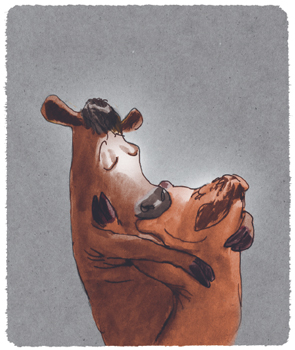LA LANGUE
TONGUE
BEEF, VEAL, PORK OR LAMB TONGUE
can be purchased from specialty butchers
may need to be ordered ahead of time
blanch and rinse before cooking


FLESHY, ELONGATED MUSCLE, LOCATED
IN THE ORAL CAVITY OF ANIMALS
Beef and veal tongue start talking as soon as the green pokes through the concrete and the paths are no longer covered with snow; as soon as the living gets easy. These vernacular tongues have a regional flavour, with a particular accent on protein and fat, and are a source of vitamin B12, their local idiom. Delicate in style, tongues were long reserved for lords before being democratised to become the lingua franca they are today, found in every continent.
They’re ebullient boiled, conversational in salads, opinionated in a pot-au-feu, and chatty with whoever pays them heed. Veal tongue, especially, lends itself to being rolled in the head. Lamb tongue and pork tongue are more discreet, more confidential. Lamb tongue is no doubt the most prized and deserves the most attention. It combines finesse and character with an oriental inflection when it runs into Lebanon, and an exotic lilt in Morocco; this cosmopolitan tongue is universal. Pork tongue, properly speaking, is rarely spoken. It is often a dead tongue preserved in brine or combined with others to form a patois called head cheese. There is no place, in any case, for the langue de bois here.